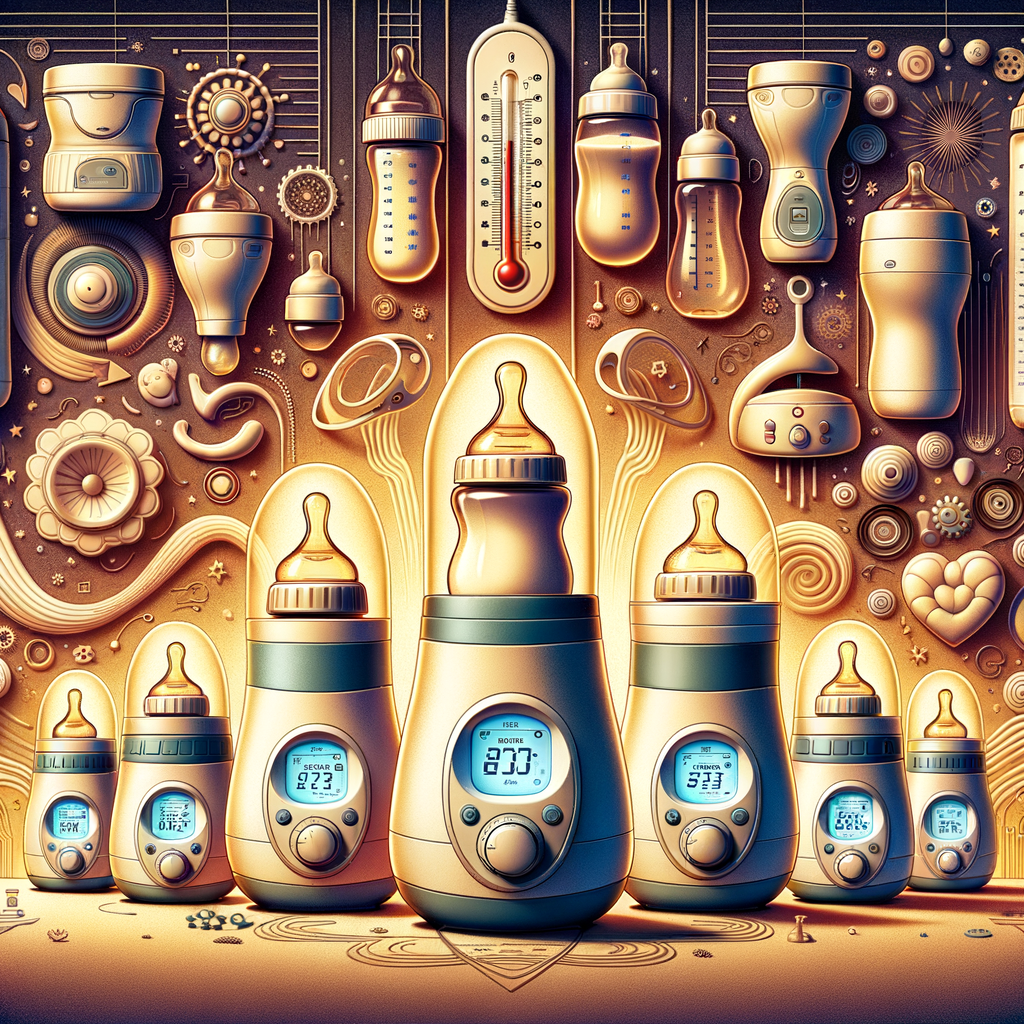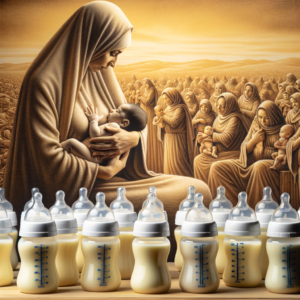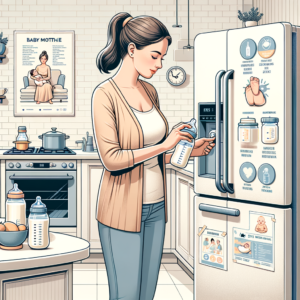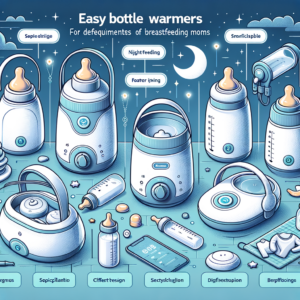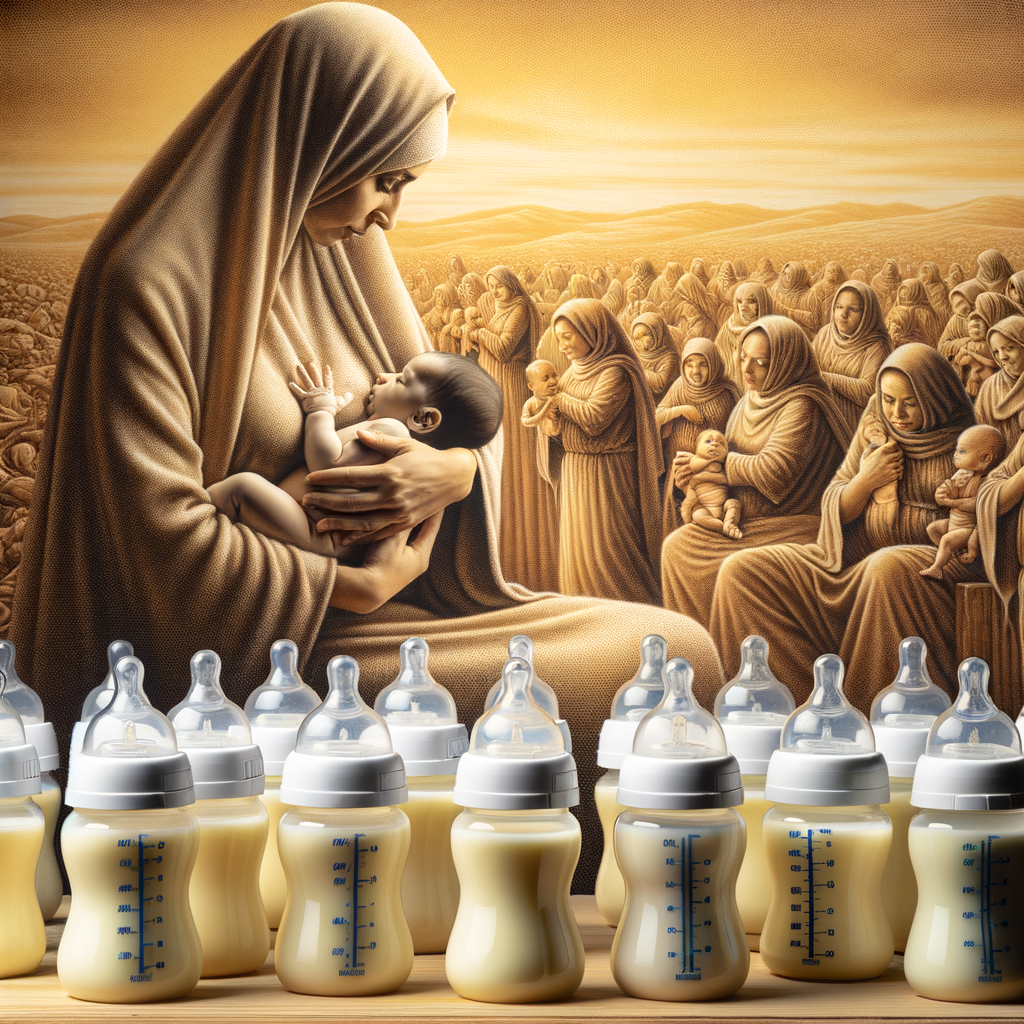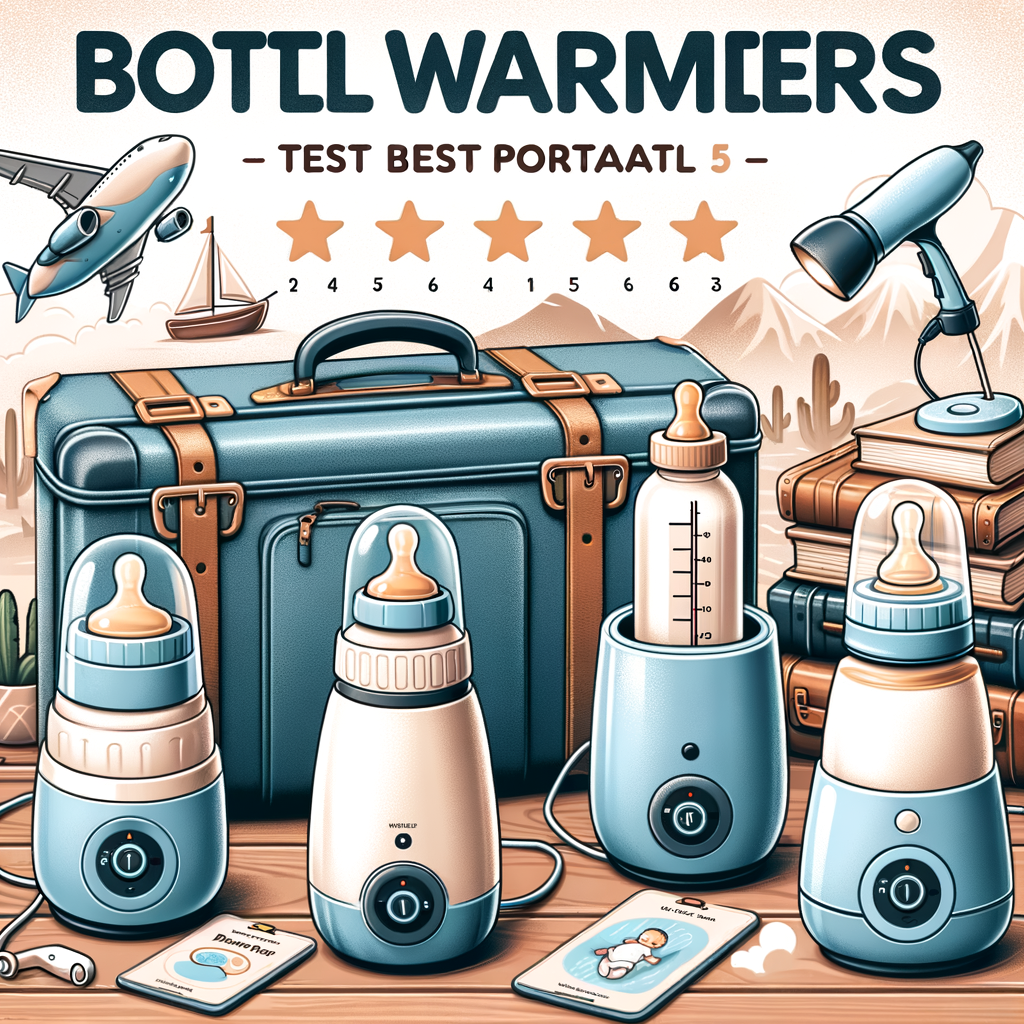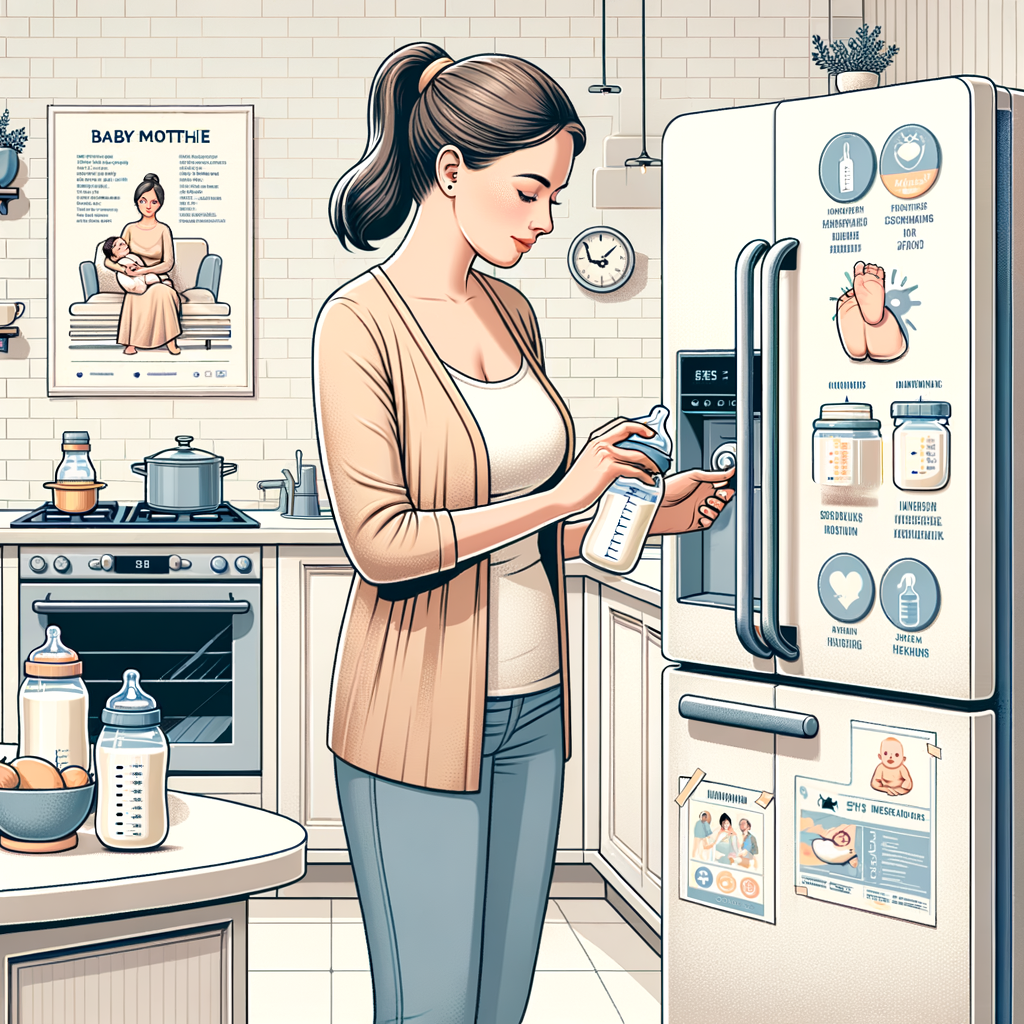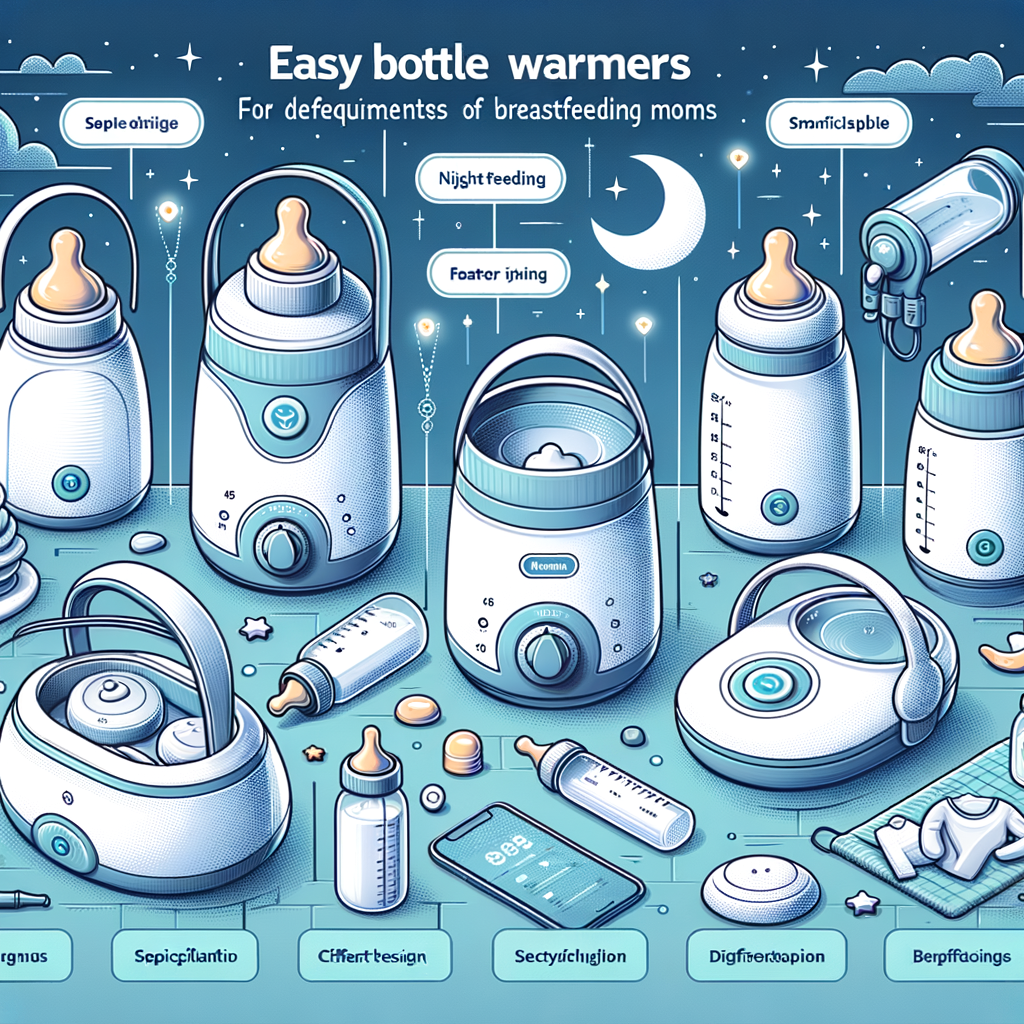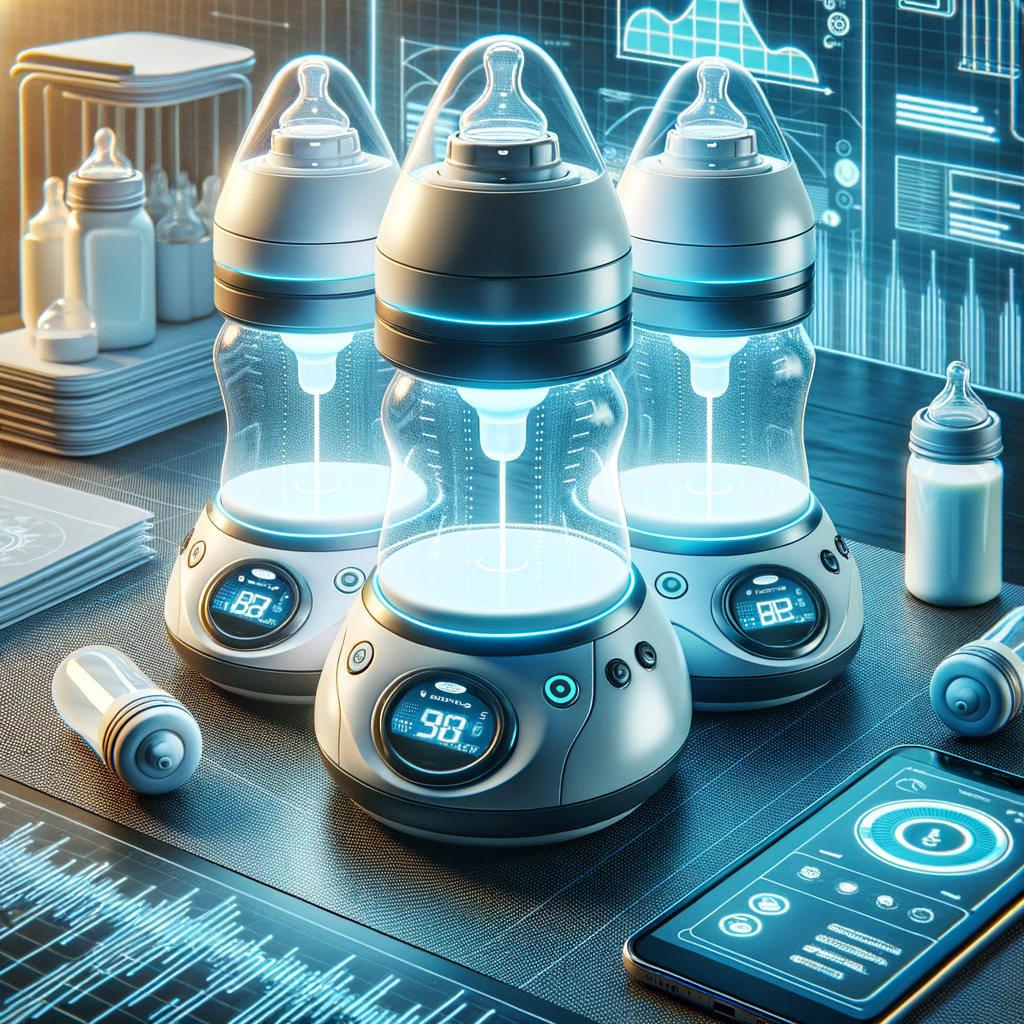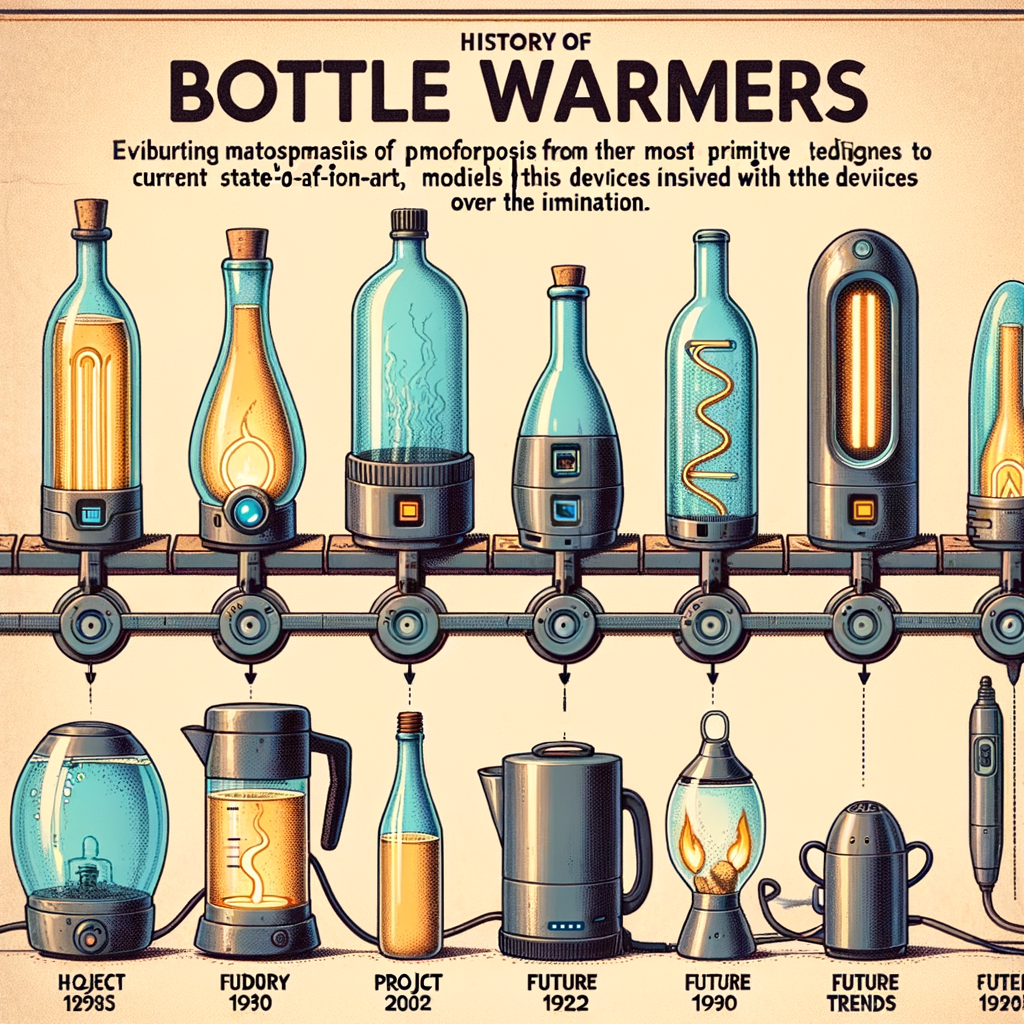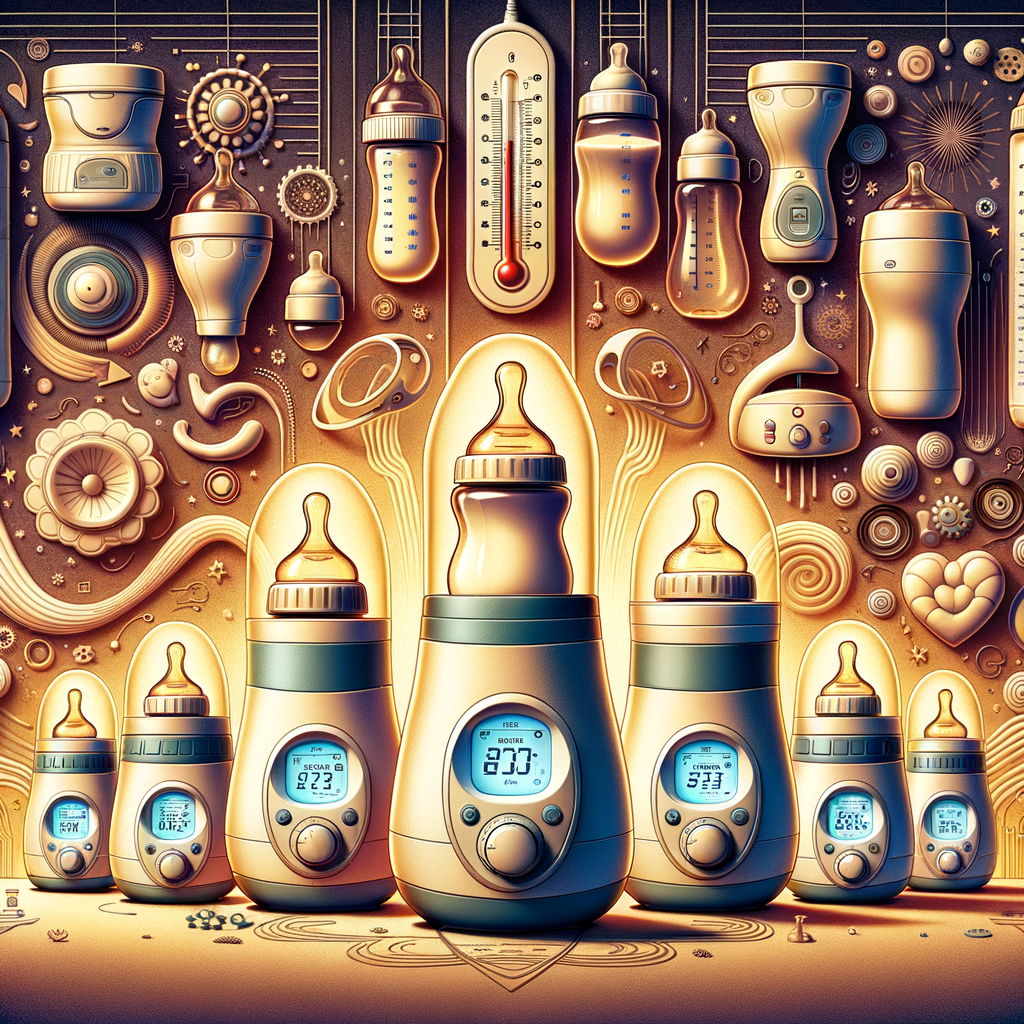
Introduction to Bottle Warmers for Breastfeeding
Welcome to our comprehensive guide on bottle warmers for breastfeeding. This essential tool can make a significant difference in your breastfeeding journey, making it easier for both you and your baby. In this section, we will explore the importance of bottle warmers and how they can aid in breastfeeding.
- Understanding the Importance of Bottle Warmers
- How Bottle Warmers Can Aid in Breastfeeding
A bottle warmer is not just a luxury, but a necessity for many parents. It helps to heat the breast milk to the right temperature, ensuring that your baby gets the most nutrients. Cold milk can be hard for a baby’s stomach to digest, and overheating can destroy the beneficial nutrients in breast milk. A bottle warmer takes the guesswork out of this process, providing the perfect temperature every time.
Bottle warmers can be a lifesaver for breastfeeding mothers, especially those who pump and store their milk. They help in quickly and evenly warming the milk, which can be a great help during those late-night feedings. Plus, they preserve the quality of the breast milk, ensuring your baby gets all the necessary nutrients. This can lead to a happier, healthier baby and a less stressed mom.
In the following sections, we will delve deeper into finding the perfect temperature for baby milk, various breast milk warming techniques, and reviews of the best bottle warmers on the market. We will also provide a comprehensive guide on breastfeeding and bottle warming, and help you discover your baby’s ‘Goldilocks Zone’ – the perfect temperature for their milk.
Finding the Perfect Temperature for Baby Milk
Feeding your baby with milk at the right temperature is crucial for their health and comfort. In this section, we will explore how to identify the ideal temperature for baby milk and understand the risks associated with serving milk that is too hot or too cold.
- Identifying the Ideal Temperature for Baby Milk
- Understanding the Risks of Too Hot or Too Cold Milk
The ideal temperature for baby milk is around 98.6 degrees Fahrenheit (37 degrees Celsius), which is roughly the same as body temperature. This temperature is not only comfortable for the baby but also helps to preserve the nutrients in the milk. To check the temperature, you can use a baby bottle thermometer or test a few drops on the inside of your wrist. It should feel warm, but not hot.
Feeding your baby with milk that is too hot can cause burns to their mouth and throat. On the other hand, cold milk might not be as appealing to your baby and could lead to them refusing the feed. Additionally, if breast milk is too cold, it could lose some of its nutritional value. Therefore, it’s essential to ensure the milk is at the right temperature before feeding your baby.
In conclusion, finding the perfect temperature for baby milk is a critical aspect of feeding your baby. It ensures not only their comfort but also their health and well-being. Always remember to check the temperature before each feed to provide your baby with the best possible feeding experience.
Breast Milk Warming Techniques
Warming breast milk to the right temperature for your baby is an essential skill for parents. This section will focus on how to use bottle warmers for breastfeeding effectively.
Using Bottle Warmers for Breastfeeding
Bottle warmers are a popular choice for many parents due to their convenience and efficiency. Here’s a step-by-step guide and some common mistakes to avoid when using them.
- Step by Step Guide to Using Bottle Warmers
- Ensure the bottle warmer is clean and dry before use.
- Place the bottle of breast milk into the warmer.
- Set the temperature according to the manufacturer’s instructions. Remember, the goal is to warm the milk, not make it hot.
- Once the milk is warmed, shake the bottle gently to distribute the heat evenly.
- Always test the milk temperature on your wrist before feeding your baby.
- Common Mistakes to Avoid
- Overheating the milk: Overheating can destroy the beneficial nutrients in breast milk. Always set the warmer to a safe temperature.
- Not testing the temperature: Always test the milk on your wrist before feeding your baby to ensure it’s not too hot.
- Not cleaning the warmer: Regular cleaning is essential to prevent the growth of bacteria.
Follow these steps to warm your breast milk using a bottle warmer:
While bottle warmers are generally easy to use, there are a few common mistakes you should avoid:
Using a bottle warmer can make the process of warming breast milk easier and more efficient. However, it’s crucial to use it correctly to ensure the safety and health of your baby.
Alternative Warming Methods
While bottle warmers are a popular choice for many parents, there are also alternative methods to warm breast milk. These methods are simple, cost-effective, and can be just as safe and efficient when done correctly. Let’s explore two of these alternative warming methods: using warm water and thawing frozen breast milk.
- Using Warm Water
One of the simplest methods to warm breast milk is by using warm water. This method doesn’t require any special equipment, making it a convenient option for many parents.
Here is a step-by-step guide on how to warm breast milk using warm water:
- Fill a bowl or basin with warm water. The water should be around the same temperature as you would use for a baby’s bath.
- Place the bottle of breast milk in the warm water. Make sure the water level is high enough to reach the level of milk in the bottle.
- Leave the bottle in the warm water for a few minutes. Check the temperature of the milk regularly to ensure it doesn’t get too hot.
- Once the milk is at the desired temperature, remove the bottle from the water and dry it off. Shake the bottle gently to ensure the milk is evenly heated.
- Always test the milk temperature before feeding your baby. It should be warm, but not hot.
- Thawing Frozen Breast Milk
If you have frozen breast milk, it’s important to thaw it properly to maintain its nutritional value. Here’s how to do it:
- Move the frozen breast milk from the freezer to the refrigerator. It’s best to do this the night before you plan to use it.
- Once the milk is thawed, you can warm it using the warm water method described above.
- If you need to use the milk immediately, you can also thaw it under running warm water. Just remember to keep the water temperature moderate to avoid overheating the milk.
- Never refreeze thawed breast milk. If your baby doesn’t finish the bottle, discard the leftover milk.
Remember, whether you’re using a bottle warmer or an alternative method, the key is to heat the milk gently and evenly to preserve its nutritional value and ensure it’s safe for your baby.
Best Bottle Warmers Review
Choosing the right bottle warmer for your baby can be a daunting task, especially with so many options available. In this section, we will review some of the top-rated bottle warmers for breastfeeding and discuss the pros and cons of different models.
- Top rated bottle warmers for breastfeeding
- The First Years Quick Serve Bottle Warmer: This bottle warmer is known for its speed and efficiency. It can warm a bottle in just minutes, making it perfect for those late-night feedings.
- Dr. Brown’s Deluxe Bottle Warmer: This model has a built-in water reservoir, so you don’t have to refill it with every use. It also features an automatic shut-off for safety.
- Philips Avent Fast Bottle Warmer: This bottle warmer evenly heats the milk, preventing hot spots. It also has a defrost setting for frozen breast milk.
- Pros and cons of different models
Here are some of the top-rated bottle warmers that are perfect for breastfeeding mothers:
While all the above-mentioned bottle warmers are top-rated, they each have their own pros and cons:
| Model | Pros | Cons |
|---|---|---|
| The First Years Quick Serve Bottle Warmer | Fast and efficient, easy to use | May not fit all bottle sizes |
| Dr. Brown’s Deluxe Bottle Warmer | Built-in water reservoir, automatic shut-off | More expensive than other models |
| Philips Avent Fast Bottle Warmer | Even heating, defrost setting | May take longer to warm than other models |
In conclusion, the best bottle warmer for you will depend on your specific needs and preferences. Consider the pros and cons of each model, and choose the one that best fits your lifestyle and your baby’s needs.
Safe Temperature for Breast Milk
When it comes to feeding your baby, ensuring the milk is at a safe temperature is crucial. Let’s delve into understanding the safe temperature range for breast milk and how to accurately measure it.
- Understanding the safe temperature range for breast milk
- How to accurately measure milk temperature
- Use a baby bottle thermometer. These are specially designed for measuring the temperature of liquids in baby bottles.
- Ensure the thermometer is clean and sanitized before use.
- Place the thermometer in the milk and wait for the reading to stabilize.
- Check the reading. If it’s within the safe range, the milk is ready to serve.
According to health experts, the safe temperature for breast milk is around body temperature, approximately 98.6°F (37°C). This is considered the ‘goldilocks zone’ for breast milk, where it’s not too hot to harm your baby or too cold to be unappetizing.
It’s important to note that overheating can destroy the beneficial nutrients in the milk. Therefore, never heat breast milk above 104°F (40°C). On the other hand, if the milk is too cold, your baby might not drink it, which could lead to inadequate nutrition.
Measuring the temperature of breast milk accurately is vital for your baby’s safety and health. Here are some simple steps to follow:
Remember, always test the milk temperature yourself before feeding your baby. You can do this by sprinkling a few drops on your wrist. It should feel warm, but not hot.
In conclusion, maintaining the right temperature for breast milk is essential for your baby’s health and comfort. By understanding the safe temperature range and accurately measuring it, you can ensure your baby gets the most out of each feeding.
Breastfeeding and Bottle Warming: A Comprehensive Guide
When it comes to feeding your baby, maintaining the right temperature for breast milk is crucial. This guide will help you understand how to achieve the perfect balance.
Breastfeeding Bottle Temperature: Finding the Right Balance
It’s important to ensure that the temperature of the breast milk you’re feeding your baby is just right. Too hot, and it could harm your baby’s mouth; too cold, and your baby might reject it. So, how can you find the right balance?
- How to ensure consistent temperature
- Benefits of maintaining the right temperature
Consistency is key when it comes to warming your baby’s milk. A bottle warmer can be a great tool to achieve this. It’s designed to heat the milk to the perfect temperature every time, taking the guesswork out of the process. Remember to always test the milk on your wrist before feeding your baby to ensure it’s not too hot.
Keeping your baby’s milk at the right temperature has several benefits. First, it ensures that your baby is comfortable while feeding. Second, it helps to preserve the nutrients in the breast milk, which can be destroyed by overheating. Lastly, it can help to prevent colic, a common condition in babies that can cause severe, often fluctuating pain.
In conclusion, maintaining the right temperature for your baby’s milk is crucial for their comfort and health. By using a bottle warmer and always testing the milk before feeding, you can ensure a safe and enjoyable feeding experience for both you and your baby.
Finding the Right Bottle Warmer for Your Needs
Choosing the right bottle warmer for your needs can be a daunting task, especially with the variety of options available in the market. However, with the right information, you can make an informed decision that will suit your needs and those of your baby. Here are some factors to consider when choosing a bottle warmer:
- Speed: How fast a bottle warmer can heat up your baby’s milk is a crucial factor. Some warmers can heat a bottle in less than a minute, while others may take a few minutes.
- Size: The size of the bottle warmer is also important. It should be able to accommodate different bottle sizes and shapes.
- Temperature Control: A good bottle warmer should have adjustable temperature settings to avoid overheating the milk and destroying its nutrients.
- Safety Features: Look for a bottle warmer with safety features like auto shut-off when the desired temperature is reached or when the water in the warmer runs out.
- Portability: If you travel often, you might want to consider a portable bottle warmer.
Now that you know what to look for in a bottle warmer, the next question is, where can you buy the best bottle warmers?
There are several places where you can buy high-quality bottle warmers. These include:
- Online Stores: Online stores like Amazon, eBay, and Walmart offer a wide range of bottle warmers from different brands. You can read reviews from other buyers to help you make an informed decision.
- Baby Stores: Baby stores usually have a variety of baby items, including bottle warmers. You can physically examine the bottle warmer before making a purchase.
- Department Stores: Department stores also stock baby items. You can find a variety of bottle warmers in their baby section.
Remember, the best bottle warmer is not necessarily the most expensive one. It’s the one that meets your specific needs and fits within your budget.
Conclusion: Discovering Your Baby’s Goldilocks Zone
As we reach the end of this comprehensive guide, it’s important to reflect on the key points we’ve discussed. The journey of breastfeeding, while beautiful, can be filled with challenges. One of these challenges is ensuring that your baby’s milk is always at the perfect temperature. This is where bottle warmers come into play. They are not just a convenience, but a necessity in the world of breastfeeding.
- Summarizing the importance of bottle warmers in breastfeeding
Bottle warmers are a crucial tool for breastfeeding mothers. They help maintain the nutritional value of breast milk by warming it to the ideal temperature. This not only preserves the essential nutrients but also makes the milk more appealing to the baby. Remember, too hot can destroy the nutrients, and too cold might not be liked by your baby. Hence, finding the ‘Goldilocks Zone’ for your baby’s milk temperature is essential.
- Recap of best practices for warming breast milk
When it comes to warming breast milk, there are a few best practices to keep in mind. Always use a bottle warmer instead of a microwave to avoid hot spots. Warm the milk to body temperature, around 98.6°F (37°C), which is most comfortable for the baby. Never refreeze thawed milk, and always check the temperature before feeding your baby. Following these practices will ensure that your baby gets the most out of each feeding session.
In conclusion, finding your baby’s ‘Goldilocks Zone’ for milk temperature might take some time and patience, but with the right tools and knowledge, you can make the breastfeeding journey a smooth one. Remember, every baby is unique, and what works for one might not work for another. So, keep experimenting until you find what’s just right for your little one.

